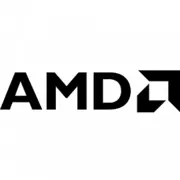AMD 3020e

AMD 3020e: Budget Processor for Everyday Tasks - A Complete Overview
April 2025
The AMD 3020e processor, despite the age of its architecture, is still found in budget laptops. Let's explore who this chip is suitable for in 2025, its strengths, and in which scenarios it performs better than competitors.
Architecture and Technical Process: 14 nm and Modest Ambitions
Process and Basic Structure
The AMD 3020e is built on a 14 nm technology process — outdated even for 2025. This dual-core processor lacks multi-threading support (2 cores / 2 threads), which immediately limits its capabilities in multitasking. The base clock speed is 1.2 GHz, while the maximum in turbo mode is 2.6 GHz.
Integrated Graphics
The integrated GPU is AMD Radeon Graphics with 3 compute units (192 shaders) and a frequency of up to 1000 MHz. This Vega architecture solution handles 4K video decoding but is poorly suited for modern gaming.
Cache Memory
The processor has 4 MB of L3 cache, which is typical for budget models. This is sufficient for simple applications, but active use of a browser or office programs may lead to “stutters”.
Power Consumption and TDP: 6 W for Passive Cooling
The TDP of the 3020e is 6 W, allowing it to be used in compact devices without active cooling. For example, in ultra-thin laptops or convertible tablets.
Power-Saving Technologies
- AMD SenseMI: automatically adjusts frequency and voltage based on load.
- CoolCore: disables unused parts of the processor to save energy.
- Compatibility with Windows Modern Standby: instant wake-up from sleep mode without draining the battery.
These features help extend battery life, but due to the outdated process, energy efficiency is lower than that of 7 nm or 5 nm chips (like the Apple M1).
Performance: Modest Results, but with Nuances
Benchmarks
- Geekbench 6: 666 (single-core) / 1105 (multi-core). For comparison: Intel Celeron N5105 scores about 700/1800, while Apple M1 reaches 2200/8000.
- Cinebench R23: 250 points (single-core) / 480 (multi-core).
Real Tasks
- Office Work: Word, Excel, browser with 5-7 tabs — the processor handles it, but when running Zoom + Chrome, it may start to "stutter".
- Multimedia: Viewing 4K videos on YouTube without lag (thanks to hardware decoding of VP9 and H.265).
- Gaming: Only old or light games: Minecraft at low settings — 25-30 FPS, Dota 2 — 15-20 FPS (720p).
Turbo Mode
Turbo boosting to 2.6 GHz works briefly (5-10 seconds), after which the processor throttles due to overheating. In laptops with passive cooling, the turbo mode is hardly activated.
Usage Scenarios: Who Is the 3020e For?
1. Students — for working on texts, presentations, and online courses.
2. Office Workers — basic tasks in Google Workspace or Microsoft 365.
3. Casual Users — social networks, streaming, video calls.
4. Backup Devices — compact laptops for travel (e.g., Lenovo IdeaPad 1 or HP Stream 14).
Not Suitable For:
- Video editing (even at 1080p).
- Modern gaming.
- Working with "heavy" IDEs (e.g., Android Studio).
Battery Life: Up to 10 Hours, but With Caveats
In laptops with a 40-45 W*h battery (e.g., ASUS VivoBook L402), the 3020e provides:
- 8-10 hours when working with documents + Wi-Fi.
- 5-6 hours when streaming video (YouTube, Netflix).
Tips for Increasing Battery Life:
- Reduce screen brightness to 50%.
- Use the “Battery Saver” mode in Windows.
- Disable background applications (OneDrive, Spotify).
Comparison with Competitors: Who Performs Better in 2025?
1. Intel Celeron N5100 (10 nm, 4 cores/4 threads, TDP 6 W):
- Higher multi-threaded performance (+30% in Geekbench 6 Multi Core).
- Weaker graphics (Intel UHD Graphics).
- Laptop prices: $320-$400.
2. Apple M1 (in base MacBook Air):
- 3-4 times higher performance.
- Price starting at $999 — a different class of devices.
3. AMD Athlon Silver 3050e (2 cores/4 threads, 6 W):
- Support for SMT (4 threads) provides an advantage in multitasking.
- Laptop prices with 3050e — $350-$450.
Conclusion: The 3020e falls short against most modern counterparts but wins with its low price.
Pros and Cons: Is It Worth Getting?
Strengths:
- Low price for laptops ($250-$350).
- Passive cooling (no noise).
- Support for modern video codecs.
Weaknesses:
- Outdated 14 nm process.
- Only 2 threads — multitasking is limited.
- No support for PCIe 4.0 and Wi-Fi 6.
Recommendations for Choosing a Laptop
1. Device Type: Ultrabook or compact laptop (11-14 inches).
2. RAM: At least 8 GB (4 GB in 2025 is painful).
3. Storage: Only SSD (256 GB and above).
4. Display: IPS matrix with a resolution of 1920×1080 (HD+ is already outdated).
5. Ports: USB-C for charging and HDMI for a projector.
Examples of 2025 Models:
- Acer Aspire 3 (A315-23-R3CL): 14" FHD, 8 GB, 256 GB — $299.
- Lenovo IdeaPad Slim 1: 15.6" HD, 8 GB, 128 GB — $279.
Final Conclusion: Who Is the AMD 3020e Suitable For?
This processor is a choice for those who:
- Are looking for the cheapest laptop for basic tasks.
- Value quiet operation (fanless).
- Do not plan to use the device for more than 2-3 years.
Key Benefits:
- Price below $300.
- Sufficient for everyday work and study.
- Compactness and lightweight devices.
Alternative: If the budget allows for an additional $100-150, it's better to choose a laptop with AMD Athlon Silver 3050e or Intel N5100 — they will last longer and disappoint less in multitasking.
Basic
CPU Specifications
Memory Specifications
GPU Specifications
Benchmarks
Compared to Other CPU
Share in social media
Or Link To Us
<a href="https://cputronic.com/en/cpu/amd-3020e" target="_blank">AMD 3020e</a>